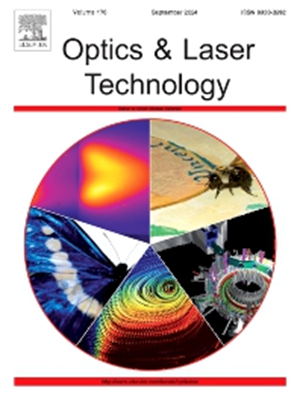MOU-Mamba: Multi-Order U-shape Mamba for infrared small target detection
IF 4.6
2区 物理与天体物理
Q1 OPTICS
引用次数: 0
Abstract
Infrared small target detection(IRSTD) algorithms based on CNN and Transformer have achieved remarkable results. However, approaches relying on CNNs are prone to missed or false detections due to the inherent limitations of their local receptive fields, while Transformer-based structures are insufficient in local feature extraction and are computationally expensive. Recently, different variations of the Mamba, especially the integration of the 2D-Selective-Scan (SS2D) technique, have posed strong competition to CNN– and Transformer-based methods. Therefore, this paper proposes a Multi-Order U-shape Mamba (MOU-Mamba) network to explore the potential application of SS2D in IRSTD. Specifically, we design a Multi-Order 2D-Selective-Scan (MO-SS2D) module that gradually minimizes redundant information produced by SS2D operations via multi-order interactions, effectively suppressing background interference. Moreover, we propose a Local-Guided 2D-Selective-Scan (LG-SS2D) module that enhances target discernibility by constructing complementary local and global features at each interaction level. Experimental results from three public datasets show that the proposed MOU-Mamba exceeds some state-of-the-art (SOTA) methods, maintaining an effective balance between accuracy and computational complexity.
基于 CNN 和 Transformer 的红外小目标检测(IRSTD)算法取得了显著的成果。然而,由于其局部感受野的固有局限性,依赖 CNN 的方法容易出现漏检或误检,而基于 Transformer 的结构在局部特征提取方面存在不足,且计算成本高昂。最近,Mamba 的不同变体,尤其是二维选择性扫描(SS2D)技术的集成,对基于 CNN 和变换器的方法构成了强有力的竞争。因此,本文提出了一种多阶 U 形曼巴(MOU-Mamba)网络,以探索 SS2D 在 IRSTD 中的潜在应用。具体来说,我们设计了一个多阶二维选择性扫描(MO-SS2D)模块,通过多阶交互作用逐渐减少 SS2D 操作产生的冗余信息,有效抑制背景干扰。此外,我们还提出了局部引导二维选择性扫描(LG-SS2D)模块,通过在每个交互级别构建互补的局部和全局特征来增强目标的可识别性。来自三个公共数据集的实验结果表明,所提出的 MOU-Mamba 超过了一些最先进的(SOTA)方法,在准确性和计算复杂性之间保持了有效的平衡。
本文章由计算机程序翻译,如有差异,请以英文原文为准。
求助全文
约1分钟内获得全文
求助全文
来源期刊
CiteScore
8.50
自引率
10.00%
发文量
1060
审稿时长
3.4 months
期刊介绍:
Optics & Laser Technology aims to provide a vehicle for the publication of a broad range of high quality research and review papers in those fields of scientific and engineering research appertaining to the development and application of the technology of optics and lasers. Papers describing original work in these areas are submitted to rigorous refereeing prior to acceptance for publication.
The scope of Optics & Laser Technology encompasses, but is not restricted to, the following areas:
•development in all types of lasers
•developments in optoelectronic devices and photonics
•developments in new photonics and optical concepts
•developments in conventional optics, optical instruments and components
•techniques of optical metrology, including interferometry and optical fibre sensors
•LIDAR and other non-contact optical measurement techniques, including optical methods in heat and fluid flow
•applications of lasers to materials processing, optical NDT display (including holography) and optical communication
•research and development in the field of laser safety including studies of hazards resulting from the applications of lasers (laser safety, hazards of laser fume)
•developments in optical computing and optical information processing
•developments in new optical materials
•developments in new optical characterization methods and techniques
•developments in quantum optics
•developments in light assisted micro and nanofabrication methods and techniques
•developments in nanophotonics and biophotonics
•developments in imaging processing and systems

 求助内容:
求助内容: 应助结果提醒方式:
应助结果提醒方式:


